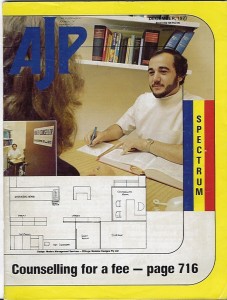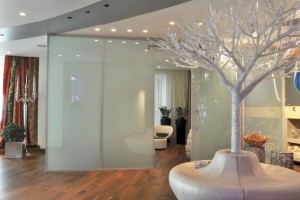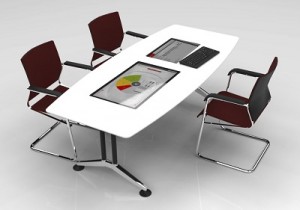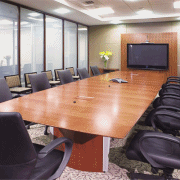Research has shown that clinical services can be inhibited in pharmacy in the introductory phase of development if the elements of good marketing and management are missing.
Marketing is a “communicator” element and the technique of telling a story that communicates the new culture of pharmacy is extremely important.
Services are like products and have to be attractively packaged so that they can be visualised by patients.
It has to be admitted that pharmacists have not been very good in this department.
Like physical products, services have to appear in the “hot spots” of a pharmacy and be part of an orchestrated “whole” so that consumers can not only see the service, but can feel the benefit.
i2P has more than 40 years of research to access in this regard and involves research that has at its source, possibly the first successful pilot study in Australia that illustrated that consumers would purchase clinical services from a pharmacist without any form of subsidisation, and that it takes approximately 12 months for a pharmacist to achieve a good income not dependent on PBS income.
Success is dependent on a whole of pharmacy approach to the delivery of clinical services.

The pilot study was written up in the Australian Journal of Pharmacy in December 1977 and it is only attitudes of leadership bodies and marketing groups that have held it out of the spotlight.
Well, that can no longer happen, but it must be admitted that the political climate has become more favourable for this type of change to occur.
We were very much ahead of our time.
The 1977 clinical room design requires very little change for today’s pharmacy – an enclosed room with a reference library, a counseling bench separating the dispensary from the room, and a “non-pulpit” floor-level dispensing bench that encouraged patient interaction.
This type of dispensing bench was first developed by the writer in 1968 and in fact was probably a first version of “forward pharmacy” that was developed to a slightly different configuration at a later date.
One of the findings from that pilot study was that a distinct and unexpected hesitancy occurred when the initial patients were invited into the room to undergo a paid consultation.
Personal selling techniques and better marketing processes involving well-written communications and appropriate stories eventually solved the problem.
But initially, the only way a patient could be coaxed in was to ensure the door was left open and the light left on.
Then and only then, did a patient cautiously enter.
Repeat visits by the same patients did not represent a problem.
But the issue was a curious one and has stuck in my memory bank all these years later.
Recent reports from other researchers identified this hesitancy as a “trust” factor as patients had not experienced this level of service from a pharmacist previously.
Certainly, trust in the familiar dispensing and advice services was at a very high level, but not in the primary health care level, which was recorded as “danger” by patients in this recent research.
More research by i2P currently has solved the problem with one of the modern technologies, not previously available.
The solution was found in a product called “Switchglass” which is a laminated glass suitable for office partitioning.
It has a reasonable level of soundproofing but it is characterised by having a special coating within the laminate that will conduct electricity.

Using a step-down transformer to create a safe voltage, the glass can be “switched” on and off.
In the “on” position the glass is crystal clear and presents as a very attractive setting.
In the “off ” position the glass is an opaque milky-white appearance.
Pharmacies would be advised to leave their Switchglass office in an “on” position permanently as a means of promotion, until a patient is seated.
The you can dramatically illustrate the “wow” factor as you switch the glass off and the patient becomes enveloped in a cocoon of privacy.
So the room itself becomes a major merchandising factor and talking point, just the ticket to get clinical services started in your pharmacy.
And with the light on and the room signposted with the words “Clinical Services” you begin to see how your story could develop and how you can build change into your very traditional structure and approach.
Lit up like a Christmas tree it will be noticed by all and present opportunities for the pharmacy staff to tell the story of clinical services.
Properly prepared brochures and booklets will tell the story appropriately and professional assistance should be invested in to ensure the story appeals to the appropriate audience.
Switchglass is an Australian product and the manufacturer can be found in the Perth telephone book.
Examples of Switchglass switching on and off are illustrated below.
Once you  have decided to make a feature of your clinical service office space, careful consideration should be given as to how it should be furnished.
have decided to make a feature of your clinical service office space, careful consideration should be given as to how it should be furnished.
In general, furnishings should be modern, comfortable and colourful.
The overall design, while blending with the general decor of the pharmacy should stand out and promote itself as being cheerful and welcoming.

There are other features of Switchglass that make it appropriate for pharmacist clinical services use.
One is that it can screen images from a
pr ojector using reverse projection.
ojector using reverse projection.
This would find use if you wished to illustrate some component of your consultation with clarity.
In all primary health care consultations there is always one component that relates to general education that is not specifically private for all patients.
One method of reducing consultation costs would be to have “group consultations” – a form of mini-seminar where the total cost of that education can be shared by all participants.
This is also an area that can be shared by manufacturers
The configuration in the image below shows how the connections can be made and through the use of WiFi, the touch screens on the desk can be linked to personal iPads of the patient or pharmacist, plus the pharmacy’s dispensing system.
to personal iPads of the patient or pharmacist, plus the pharmacy’s dispensing system.
Suddenly, the cost of connecting a patient to your health system just got cheaper and independent.
This system could also link in to the “connected Glass” system we have written about, particularly for bookings.
Switchglass partitions can also be a part of the front window.
If you would like professional help to establish your own services the writer of this article is available to help and advise.
With over 40 years experience in this space and with a proven track record, we can certainly help you to deliver your clinical services.
Telephone (02) 6628 5138 to find out more details.
